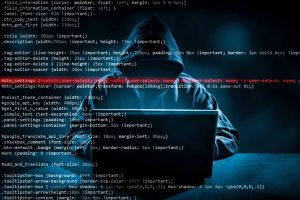Note: I am starting a series on LLM security inspired from OWSAP, will publish one blog every Tuesday for one item with detailed description, Threat and Mitigation techniques, so please stay tuned & follow me on Linkedin and Medium to read more.
Large Language Models (LLMs) like GPT-4 have revolutionised the field of artificial intelligence by enabling applications ranging from chatbots to advanced data analysis. However, with great power comes great responsibility. Securing LLMs is critical to ensure they are used safely, ethically, and effectively. This blog explores why LLM security is essential, real-life scenarios where security issues arise, and a high-level overview of securing these models.
Why is Security Required for LLMs?
- Data Privacy: LLMs often handle sensitive information, including personal data. Ensuring this data is not exposed or mishandled is crucial to comply with privacy laws like GDPR and to maintain user trust.
- Model Integrity: Ensuring that the model itself has not been tampered with or corrupted is essential to maintain its reliability and trustworthiness.
- Preventing Misuse: LLMs can be misused for generating harmful content, spreading misinformation, or automating malicious activities. Security measures are needed to mitigate these risks.
- Ethical Considerations: Ensuring that LLMs operate ethically by preventing biases and unintended harmful outputs is vital for responsible AI use.
Real-Life Scenarios Highlighting the Need for LLM Security
- Data Breaches: If an LLM is used in customer service, it may process sensitive customer information. A data breach could expose this information, leading to significant privacy violations and financial losses.
- Model Manipulation: Attackers could potentially manipulate an LLM to produce harmful or biased content, damaging the reputation of the service provider and causing societal harm.
- Unauthorized Access: Without proper access controls, unauthorized users might exploit LLMs for nefarious purposes, such as automating phishing attacks or spreading misinformation at scale.
OWSAP a very well known name in the industry recently launched a fresh guidelines especially crafted for LLMs and GenAI.
Provides a comprehensive guide for securing LLMs, adapted from their well-known OWASP Top 10 list. Here are key considerations:
LLM01: Prompt Injection
- Description: Vulnerability occurs when an attacker manipulates a large language model by crafting inputs (prompts) that cause unintended actions or outputs.
- Mitigation: Implement strict input validation and context-aware filtering to sanitize inputs.
LLM02: Insecure Output Handling
- Description: Refers to insufficient validation, sanitisation, and handling of the LLM’s outputs, leading to potential misuse or harmful outcomes.
- Mitigation: Implement robust output validation and filtering mechanisms to ensure outputs are safe and appropriate.
LLM03: Training Data Poisoning
- Description: Occurs when attackers introduce malicious data into the training dataset, causing the model to learn incorrect or harmful behaviors.
- Mitigation: Validate and clean training data, and monitor for anomalous behaviors during training.
LLM04: Model Denial of Service
- Description: Attackers interact with an LLM in a manner that exhausts its resources, leading to service disruptions.
- Mitigation: Implement rate limiting, resource management, and monitoring to detect and mitigate such attacks.
LLM05: Supply Chain Vulnerabilities
- Description: The supply chain in LLMs can be vulnerable, impacting the integrity and security of the model and its components.
- Mitigation: Regularly update and patch dependencies, and use trusted sources for all software components.
LLM06: Sensitive Information Disclosure
- Description: LLM applications have the potential to reveal sensitive information, proprietary data, or personally identifiable information (PII).
- Mitigation: Use data anonymisation techniques and ensure strict access controls are in place to protect sensitive information.
LLM07: Insecure Plugin Design
- Description: LLM plugins are extensions that, when enabled, are called automatically by the language model. Insecure design can introduce vulnerabilities.
- Mitigation: Ensure plugins are thoroughly vetted and follow secure development practices.
LLM08: Excessive Agency
- Description: An LLM-based system is often granted a degree of agency that, if unchecked, can lead to unintended actions or decisions.
- Mitigation: Define clear boundaries and constraints on the model’s actions, and implement monitoring to ensure compliance.
LLM09: Over-reliance
- Description: Over-reliance can occur when an LLM produces erroneous information and users take it as accurate without verification.
- Mitigation: Encourage users to critically evaluate model outputs and provide mechanisms for verifying and correcting information.
LLM10: Model Theft
- Description: Refers to the unauthorised access and exfiltration of an LLM, leading to intellectual property theft.
- Mitigation: Implement strong access controls and encryption to protect model files and API endpoints.
Securing LLMs is a complex but essential task to ensure these powerful models are used responsibly and safely. By adhering to guidelines like those from OWASP and implementing robust security measures, organizations can protect their LLMs from various threats, ensuring their reliability and trustworthiness in real-world applications.
For more detailed information, you can visit the
OWASP LLM Security Guide (OWASP Top Ten)

